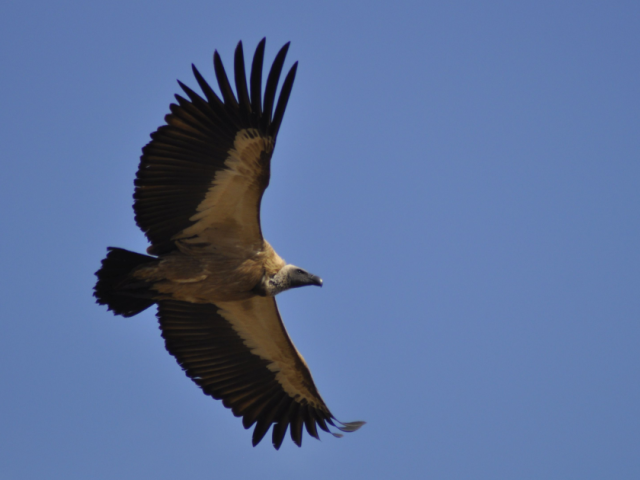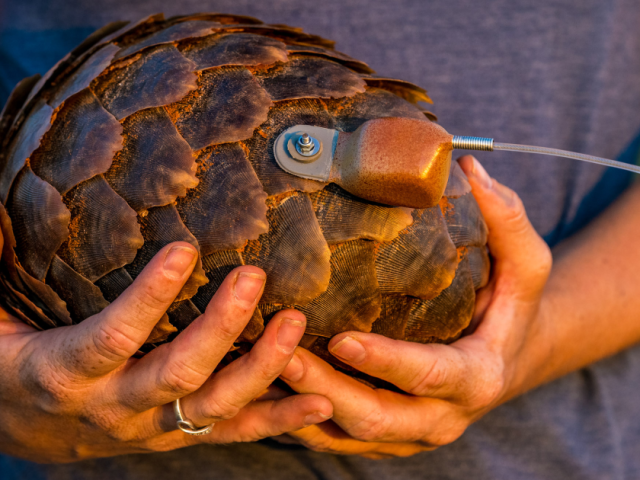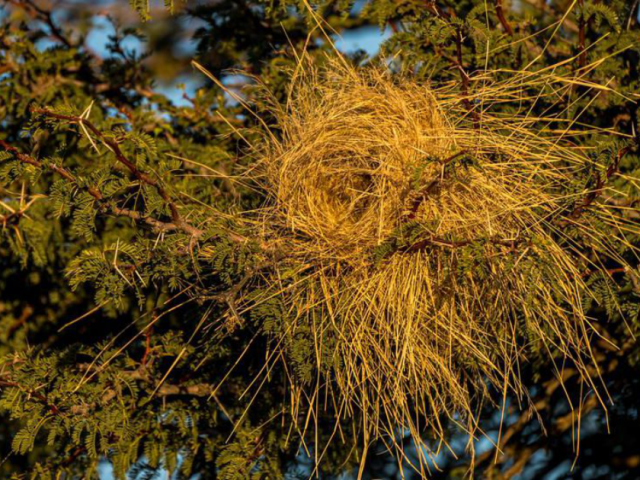There’s no disguising it; researchers have rumbled the elusive, shapeshifting, mimic octopus off the coast of Mozambique for the first time, thousands of kilometres away from what has up to now been considered its habitat.
The sightings, in the tidal flats of the Vilanculos Coastal Wildlife Sanctuary in Inhambane Province, significantly extend the octopus’s range to the African waters of the western Indian Ocean, southward by approximately 4 700 km from where it has been spotted in the Red Sea and approximately 5 600 km from confirmed records in the Arabian Sea. Sightings of this species, Thaumoctopus mimicus, remain relatively rare outside the coral triangle and northeastern Australia, with few confirmed records in the Indian Ocean. These new sightings represent the first photographically confirmed records in the southwestern Indian Ocean, and indicate that this species might be more widespread in the Indian Ocean than previously expected.

Writing in the “Journal of the Marine Biological Association of the United Kingdom”, Andrea D. Marshall, Janneman Conradie and Taryn Gilroy note that while the sightings were within the protected waters of the Vilanculos Coastal Wildlife Sanctuary, where no fishing or harvesting is permitted, the capture of cephalopods including octopus for local consumption and limited export has been documented in the region. They warn that “aggressive seine netting along the tidal flats of the greater Bazaruto seascape may also contribute to anthropogenic pressures potentially affecting this shallow water species”.
Marshall is a marine biologist whose specialty is Manta rays. She is one of the founders of the Marine Megafauna Foundation and is also a professional diver. Conradie is a conservationist, diver, microlight pilot and drone operator. Gilroy is the Operations Manager at the Vilanculos Coastal Wildlife Sanctuary.
The sightings were “fortuitous encounters” that took place in May 2020 and 2022, in shallow waters less than 30 cm deep, and in one case in an estuary “with mud flats, murky water, sandy bottom, which the mimic octopus thrives in”, says Gilroy.

The first sighting, says Gilroy, was by Marshall and Conradie, “who had been out with their dive team on the coral reefs at the Sanctuary, and in their downtime they were exploring the estuary. As a hobby they both enjoy macro-photography, and they were scuba diving with their cameras looking for creatures and they just happened upon this octopus. Andrea knew it was unusual so they stopped and they photographed it, and took a small genetic sample before releasing it. Experts later confirmed that it was indeed a mimic octopus.”
Noteworthy markings, including mottled white patterns, distinctive arm banding, and unique dorsal features, aided in identification.
“And then two years later, almost to the day, my husband Dave and I were taking a Sunday afternoon stroll along the beach on the other side of the bay from the first sighting, in a similar environment – sandy shore, very calm water – and we spotted this octopus in the shallows. This is about 11 km from the other sighting in a direct line. So we stopped to check it out and took some photos and interacted with it a little bit. And having seen the photos from Andrea we looked at each other and said ‘this might be a mimic octopus. This is not one that we’ve seen before’. So we sent photos and videos to Andrea and she said ‘yes, absolutely, another one’. So we had two records.
“This octopus does have a unique look and with those brown and white stripes it is quite striking, and that’s why it stood out to us. We’re used to seeing octopus in reef or rocky environments, and this was one out in the open in the sand which is not something you see very often. It does prefer sandy substrates. Initially this octopus was not in defensive colouring, but in one photograph I took of it it is all splayed out in a symmetrical configuration, and it was only when we were writing up the paper that we realised it was one of its defensive modes.”

The mimic octopus, initially stumbled upon in Sulawesi, Indonesia, during the 1980s, earned its name owing to its remarkable ability to mimic the appearance and behaviour of other marine species, such as lionfish, jellyfish, sea snake, shrimp and crab. It is a solitary, territorial creature, and to defend itself against predators such as the damselfish, it can mimic the sea snake by snuggling into a hole and sticking out just two arms, ringed in black bands for the occasion, and waving them to mimic the snake’s movements. This effectively deters the damselfish which is preyed on by sea snakes. Its main predators in the Sanctuary, says Gilroy, are “small sharks and rays, which are plentiful, and also birds like osprey, terns, and also fish like the King mackerel”.
The need for mimicry as protection may come from when and how the mimic octopus feeds. An opportunistic hunter, it forages in broad daylight, on open sand flats, where it’s exposed and vulnerable, for crustaceans and fish. At night, it hides in a burrow. Its flexibility and ability to alter the patterns, texture and hue of their skin to blend into their environment or imitate other species in a predator-rich environment gives the octopus a survival superpower.
Described taxonomically in 2005, T. mimicus remains a rarity in scientific encounters, often dwelling in shallow coral reefs and sandy/muddy flat environments. Confusion with a similar species, Wunderpus photogenicus, has persisted due to their resembling coloration and shared habitat preferences.
Since its initial discovery, T. mimicus sightings have been reported across the Indo-Malayan archipelago, ranging from the Gulf of Thailand to the Great Barrier Reef in Australia. Notably, in 2017, photographic evidence confirmed its presence in the eastern Indian Ocean off the coast of Phuket, Thailand, marking a significant range extension. Subsequent reports in 2020 stretched its known distribution to the Arabian Sea. However, considering the species’ scarcity and the vast coastal habitats it may inhabit, additional records are essential, especially from regions within the Indian Ocean that remain underexplored.
The Vilanculos Coastal Wildlife Sanctuary, which encompasses a diverse array of marine habitats, spans 439 km², offering protection to various ecosystems from mangrove forests to rocky reefs. Jacana Research Centre was co-funded and supported by Oppenheimer Generations Research and Conservation (OGRC) to provide a base for researchers at the Sanctuary. The two documented encounters of octopus occurred within the Sanctuary’s “total protection, no-use zones”, which Gilroy believes is a significant factor in why the mimic octopus was sighted there. “For sure, they are refuges and this contributed to the sightings. Octopus is widely consumed here, and is seen as ‘sustainable’ food, and anywhere else these mimic octopuses would have been caught and eaten. Outside the reserve there are no regulations on catching octopus,” says Gilroy.
These sightings not only mark the southernmost distribution of T. mimicus in the Indian Ocean but also highlight the need for further exploration and conservation efforts in these regions. Marshall has said that “discovering such extraordinary creatures in new habitats reminds us of the vast unknowns in marine environments, particularly in Africa. We hope this finding will inspire awe and a renewed commitment to ocean conservation”.
The full report, ‘First photographic records of mimic octopus Thaumoctopus mimicus (Cephalopoda: Octopodidia) from southern Mozambique, Southwest Indian Ocean’ is published in the Journal of the Marine Biological Association.
Author
- Tracking the Shangani Wanderer - June 18, 2025
- Rescue, rehabilitate, release: tracking the comeback of South Africa’s pangolins - June 18, 2025
- Fewer weavers, fewer homes: why nest builders matter in the Kalahari - June 17, 2025
Additional News
Pangolins are elusive and heavily trafficked. At Tswalu, researchers are working to uncover their secrets and aid conservation.
Declining Sparrow-Weavers may threaten other birds that rely on their old nests for shelter.





